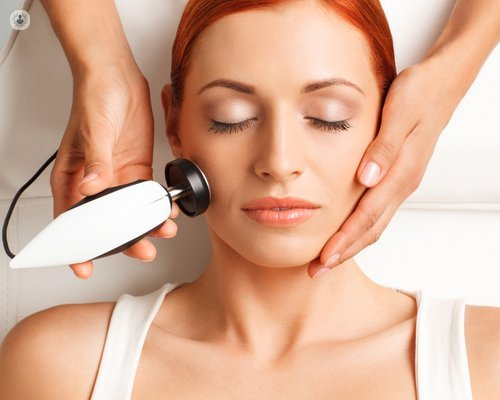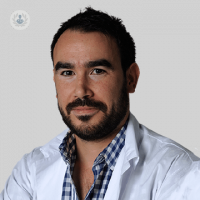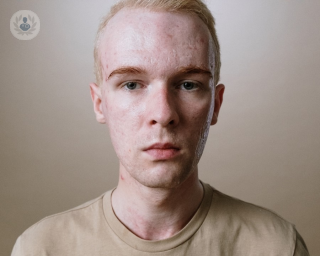Facial radiofrequency
Mr George Christopoulos - Plastic surgery
Created on: 11-05-2015
Updated on: 05-10-2023
Edited by: Karolyn Judge
What is a radiofrequency facial?
Radiofrequency is a non-invasive aesthetic technique used on the face and body to contour, tighten skin and reduce sagging. The procedure is ideal for people who do not want to have cosmetic surgery. It’s a painless treatment that does not require anaesthesia or leaves marks or scars. It uses radiofrequency energy to heat tissue and stimulate collagen production to reduce the appearance of fine lines and loose skin.

Why is a radiofrequency facial performed?
Radiofrequency facials are carried out to treat the sagging that occurs due to the loss of natural collagen and elastin, which occurs in several ways. These include:
- Skin ageing
- Lines and wrinkles
- Lack of skin tone and sagging in the face and neck
- Eye bags and dark circles
What happens during a radiofrequency facial?
A radiofrequency machine is used to heat the skin to approximately 38-40 degrees, which feels like a hot stone massage. This stimulates the production of collagen and elastin by providing heat to the inner layers of the skin. The head is slid over the area that is to be treated to direct the energy towards the deeper areas of the skin, stimulating the collagen and correcting sagging.
What are the benefits of radiofrequency facial?
There is an immediate tightening of collagen fibres and the treatment continues to promote collagen production for up to six weeks following the procedure. A radiofrequency frequency facial also gives a long-lasting lift and an increase in volume. The procedure softens fine lines, including nose to mouth lines, and tightens the jawline.
How do I prepare for a radiofrequency facial?
Not much preparation is required for radiofrequency facial. The specialist will ask about the patient's health history to know if they take any certain medication or if they suffer from any serious illness. The doctor will also check for any existing acne scars. It isn't recommended to have the procedure on damaged skin.
Which other areas of the body can radiofrequency facial techniques be applied to?
Other areas that are popular for the use of radiofrequency facial techniques include:
- abdomen/stomach;
- thighs;
- bottom;
- knees.
- Arms
Is aftercare involved in a radiofrequency facial?
After a radiofrequency facial, it's recommended to drink between two and three litres of water per day. Sun exposure is allowed, although it is highly recommended to wear sun protection.


